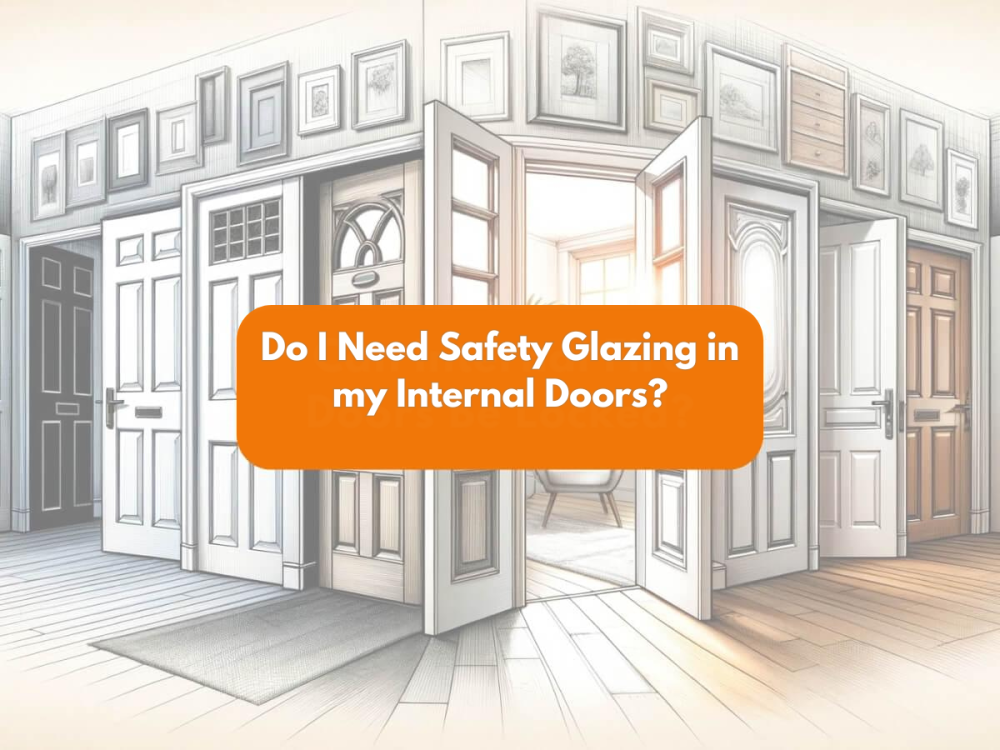Do I Need Safety Glazing in my Internal Doors?
Internal doors with glass panels can enhance your home's elegance, letting natural light flow in and creating a sense of openness. Understanding safety should always be a priority regarding glass features. Safety glazing can be used for glazed internal doors and glass-panelled doors, with laminated or toughened glass being popular choices. We will outline safety glazing regulations and the best types of glass for internal doors.
What Is Safety Glazing?
Safety glazing refers to glass that has been treated or manufactured to minimise the risk of injury when it breaks. Unlike ordinary glass, which shatters into sharp shards, safety glass is engineered to break in a manner that reduces harm. Safety glazing requirements in the UK reinforce the use of safety glazing to protect people from injury.
Toughened Glass Regulations
Glazing requirements for internal doors are essential for preventing accidents and ensuring compliance with building regulations. Failure to adhere to safety glazing requirements can result in serious injuries. According to the Royal Society for the Prevention of Accidents (RoSPA), over 30,000 glass-related injuries occur annually in UK homes, many of which involve doors and windows.
Building regulations in the UK outline the mandated use of safety glass in doors to prevent injuries. According to these regulations, safety glazing must be used in the following:
- Glazed internal doors – Any glass panel in a door that is below 1500 mm from the floor.
- Glass panels adjacent to doors – Any glazing within 300 mm of the door’s edge and below 1500 mm.
- Low-level glass panels – Any glass below 800 mm from the floor, even if it is not part of a door.
The diagram below shows where safety glazing is required according to toughened glass regulations (taken from Approved Document K in England and Wales).
Types of Glass for Doors
There are several types of safety glass suitable for internal doors:
- Toughened Glass – Also known as tempered glass, it’s heat-treated to be up to five times stronger than regular glass. If broken, it shatters into small, harmless pieces.
- Laminated Glass – This consists of two glass panes bonded by a plastic interlayer. When broken, the glass stays in place, reducing the risk of injury.
- Wired Glass – Embedded with a wire mesh, this glass holds together when shattered, preventing large shards from falling.
Benefits of Using Safety Glass for Internal Doors
Installing safety glass for doors provides multiple advantages:
- Prevents Injury – Reduces the risk of serious harm in case of breakage.
- Compliance with Regulations – Ensures your home meets legal safety standards.
- Enhanced Durability – Toughened or laminated glass withstands greater impact, reducing the likelihood of accidents.
- Improved Aesthetics – Available in various designs, including frosted or decorative styles.
Choosing the Right Safety Glass for Your Internal Doors
When selecting glass for internal doors, consider:
- Location – Areas with high traffic or children should use laminated or toughened glass.
- Privacy Needs – Frosted or tinted glass options balance light and privacy.
- Regulation Compliance: Ensure the manufacturing process complies with British and European safety standards and that the glass has kitemark certification.
Glazed Doors at Internal Doors
At Internal Doors, we offer a wide range of glazed internal doors, all manufactured to comply with British and European safety standards. If you need help choosing the right internal door, contact us. You can call us on 01455 388749 or email us at [email protected]







